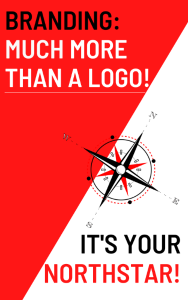In our last post, we discussed Brand Qualifiers and Brand Values.
Now we jump into Brand Mission, Brand Personality and Brand Voice. More specific to this post, we provide you with a framework to think about your brand mission, brand personality and brand voice.
Quick reminder: we interpret brand and reputation as interchangeable.
Brand Mission Primer
The brand mission statement has an internally directed focus.
It’s clearly related and connected to our brand qualifiers/values, but clearly states why we exist and what we aspire to achieve. The mission and values must work together.
Brand Personality Primer

Our brand personality guides all communication across all channels. It shapes what we include in our paid advertising. What we pitch to news and trade media outlets. How we create content for our owned and shared media channels from blogs to social to video to podcasts to events, such as tradeshows and lunch-and-learns, and everything between.
Brand Personality Example
Your brand most certainly will be something different than the following. But we offer up a hybrid brand overview for illustration purposes here. It gives a sense of how to build your description of your brand personality.
If you don’t articulate your brand personality, how can you expect everyone in your organization to personify what you want your customers to experience?
Hybrid Brand Description
We believe our brand will be a hybrid of a supporter brand (customer has a big problem and we have a solution) and a challenger brand (we consult and challenge our customers to think differently about our offer).
The hybrid brand personality must empower, consult, persuade and support customers, prospects and employees through change at every stage to keep them moving through the process of doing and valuing things differently.
We must consistently share valuable information and insights that improve the lives of customers and colleagues. As trusted advisors, we incrementally build off our successes to challenge the status-quo, price-driven mentality.
For customers, prospects and talent to think and act differently, it’s imperative we seek specific clients, prospects and talent who share our values, who seek a reliable resource essential to making their lives more predictable and secure.
Brand Voice Primer

Voice brings our brand to life. It should represent actual versus aspirational representations. Brand voice matches our culture and characteristics that we present in all our communications. It helps provide structure for what is and is not acceptable when it comes to presenting our company voice.
What values (rationale/emotional) do we want each employee to personify when interacting on our behalf? What elements do we include in our logo, tagline and other representations of our brand identity and brand experience? How do we engage customers, vendors, employees?
Purchasing decisions are made from both rational and emotional perspectives. Strong emotional relevancy demonstrates concern for buyers and can differentiate our brand. These often can be found in customer and employee research.
For example, during voice of the customer and employee interviews, it may become clear customers find functional value in our reliability, expertise and experience, and emotional value in their feeling safe, secure and worry-free. In this instance, relationships beyond business matter to our ideal customers and employees. Knowing this can inform how we position our brand with ideal customers and employee talent.
This is how we deliver on the brand mission. A brand voice might go something like this. With every interaction:
Our brand makes people feel secure. There’s safety in choosing us over others based on our demonstrated results and our association with high-end, recognizable, trusted corporate customers.
Our brand is safe, predictable, reliable, consistent, committed, intelligent, transparent, considerate, straight-forward, honest, courteous and professional in every interaction.
There’s a sense of accomplishment in delivering results that matter most to customers and colleagues. And, there’s equally important value and confidence gained in building relationships beyond business
What’s Up Next?
In our next post on Brand Architecture, we will share insights to help formulate your Brand Positioning and Brand Taglines.
[This post is an excerpt from our new eBook: Branding: Much More Than A Logo. It’s Your Northstar! Download here.]
You access easy-to-read, easy-to-implement guideposts to check your brand alignment or develop your brand from the ground up.


Karl Robe
Principal Agency Owner

